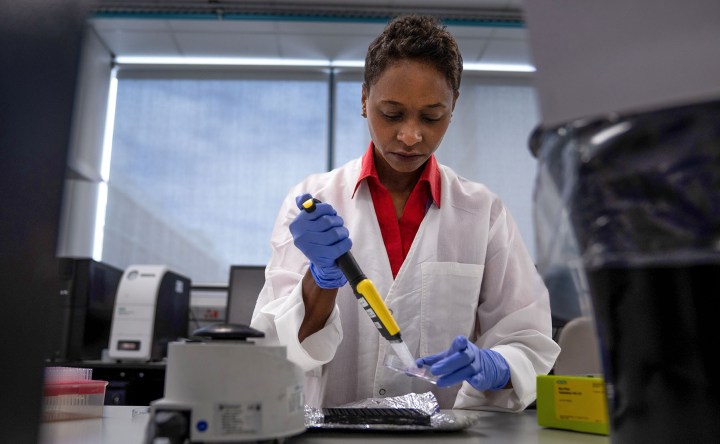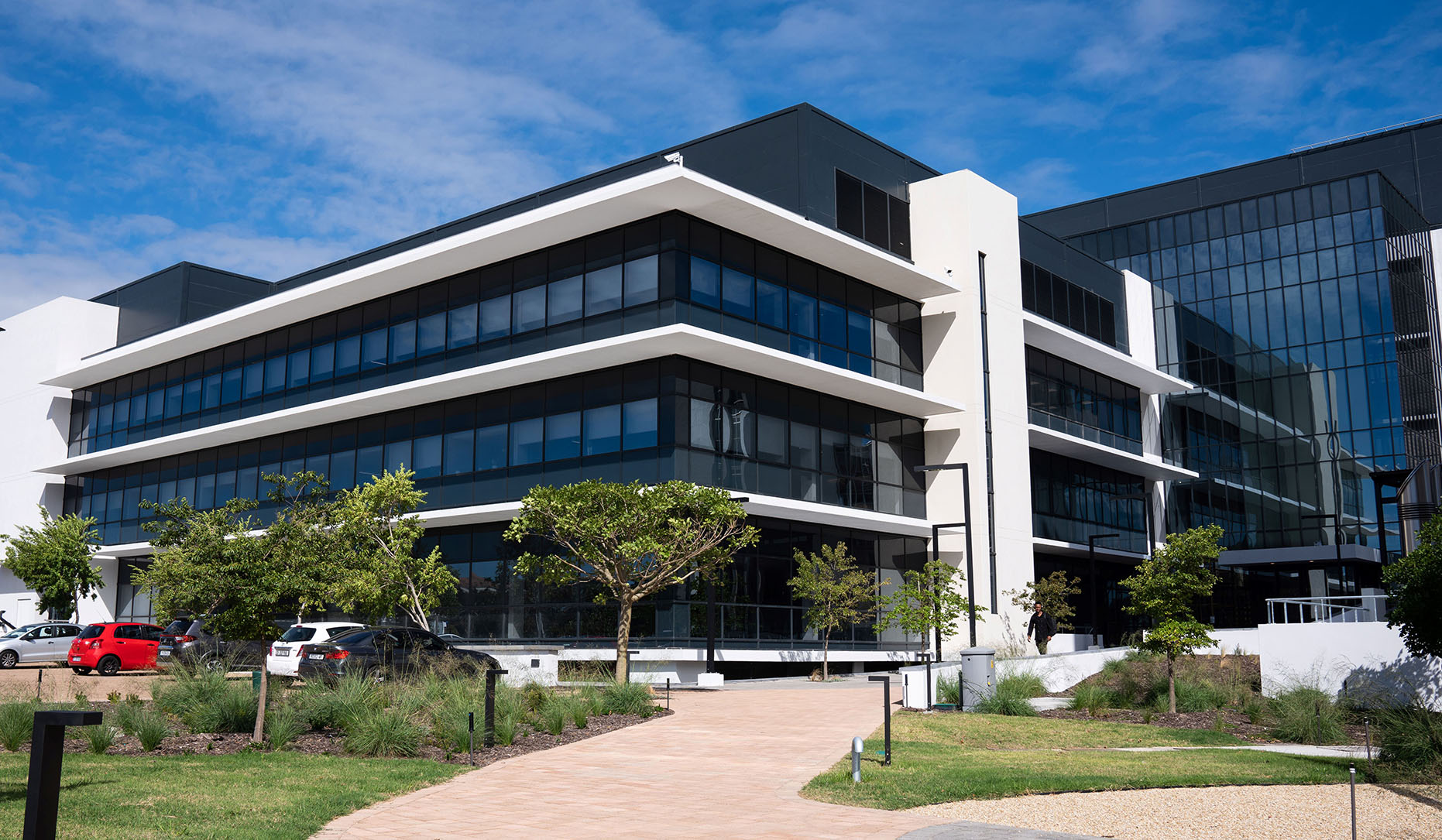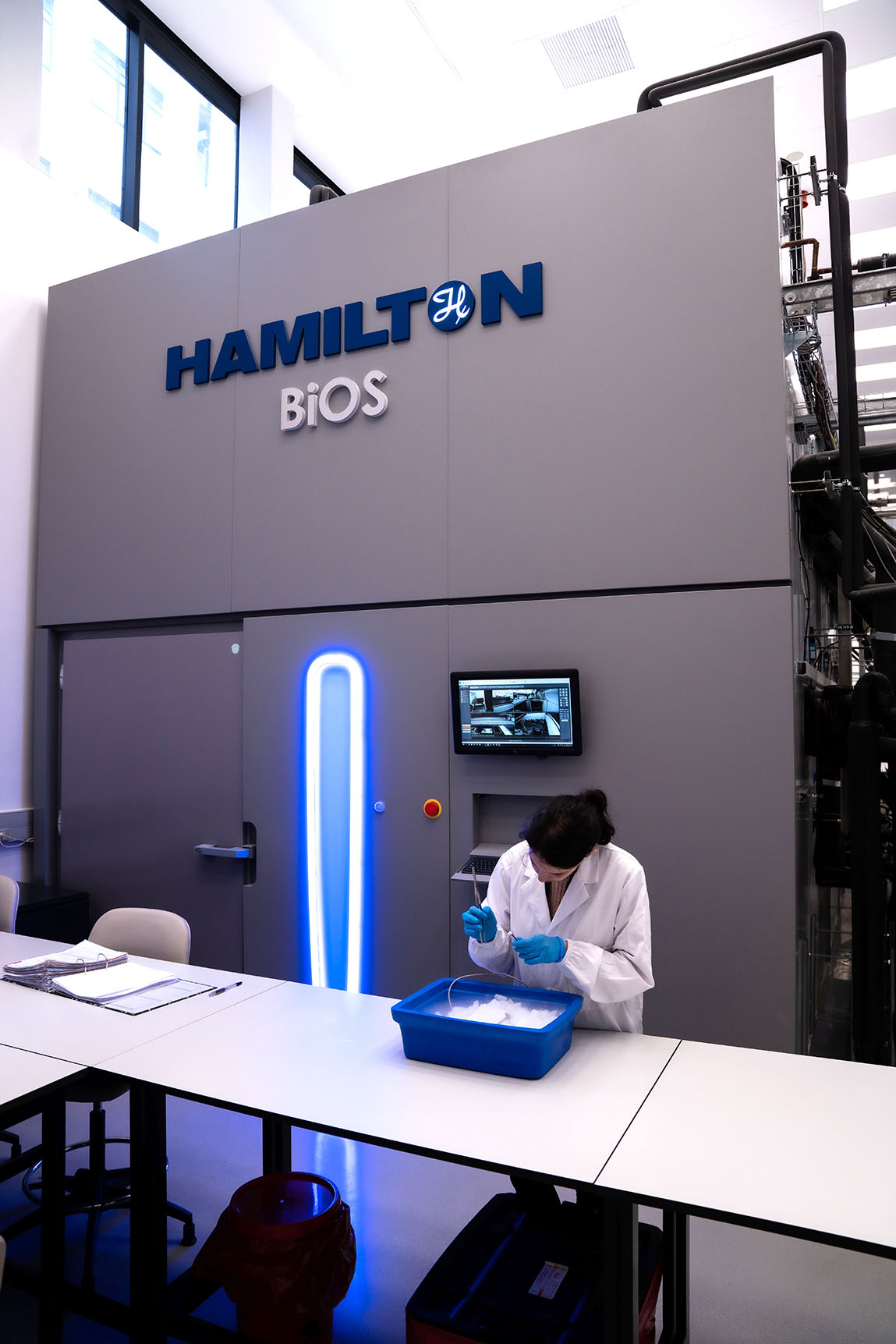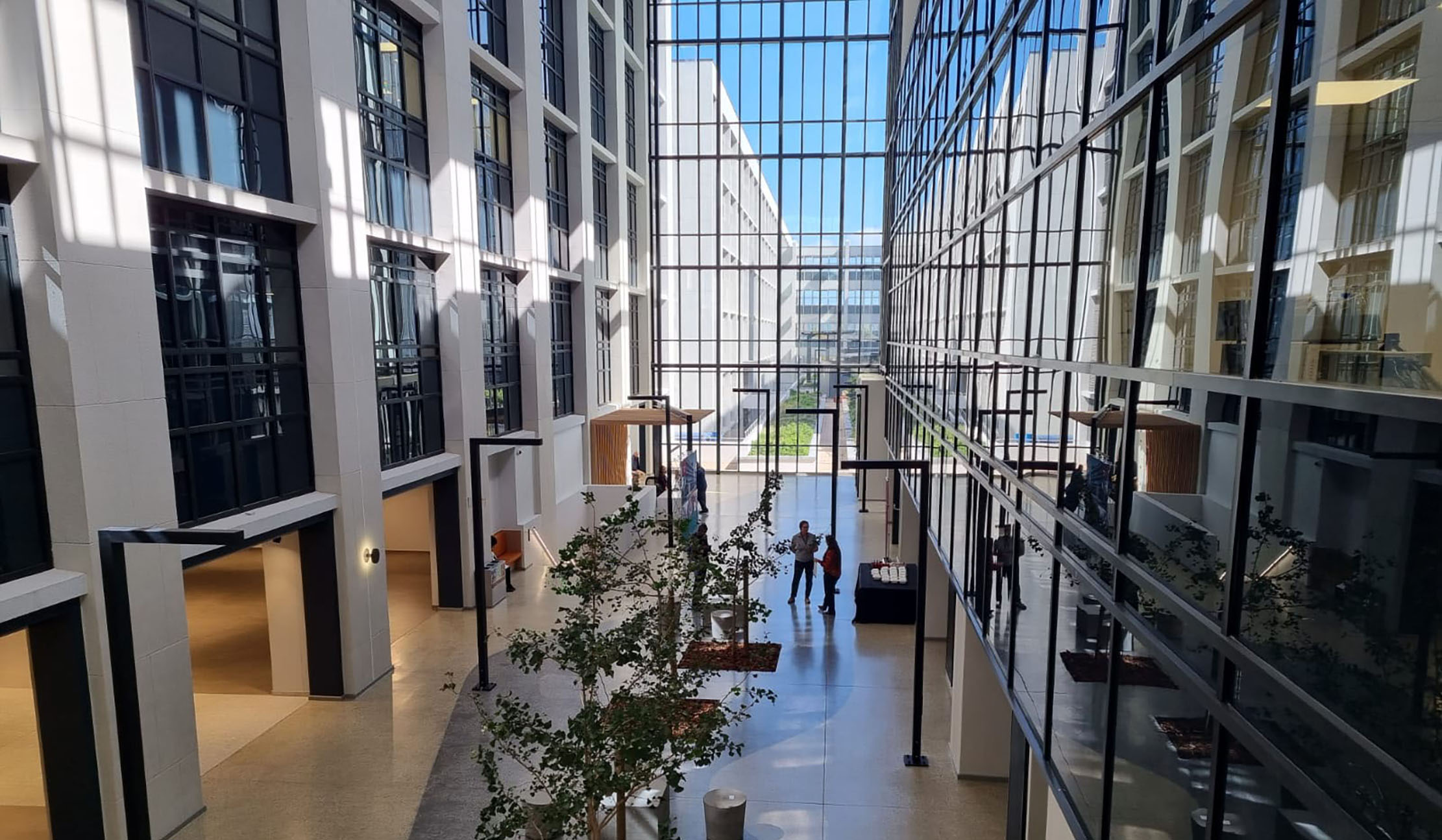CUTTING EDGE
This is the ‘highest level of science’ – inside Stellies’ new Biomedical Research Institute

The new Biomedical Research Institute on the Tygerberg campus of Stellenbosch University ‘was a 10-year dream costing R1.2-billion’ to address the major health challenges of Africa.
The Biomedical Research Institute (BMRI) has numerous facilities: a biosafety level 3 (BSL-3) laboratory, a fully automated biorepository which can store up to eight million biomedical samples, electron microscopy, four dissection halls, a surgical skill laboratory and several groups focusing on advanced genomics.
It also hosts several research units – including cardio-metabolic, Parkinson’s disease, neuroscience, animal tuberculosis, tuberculosis, rare diseases, psychiatry and drug discovery – and houses more than 500 biomedical researchers and students.
Professor Nico Gey van Pittius, the Vice Dean: Research and Internationalisation of the Faculty of Medicine and Health Sciences, said it became apparent during Covid-19 that Africa had a unique set of health challenges, populations and needs.

Two researchers working in the biosafety level 3 (BSL-3) laboratory at the Biomedical Research Institute on the University of Stellenbosch’s Tygerberg campus. (Photo: Elsabé Brits)
“Biomedical research is the basic understanding of disease but it also tries to find solutions, diagnostics and treatments, and to understand the underlying mechanisms of disease,” he said.
The biorepository unit uses the Hamilton BiOS, a large-scale, automated biological storage system, which looks positively futuristic. Instead of upright or chest freezers it is one huge freezer that stores samples such as blood, urine, stool and tissues at -80°C.
Technical officer Ané Kruger says it is the first of its kind in the southern hemisphere, able to store 3.5 million samples with the capacity for another five million. Samples that need to be stored at cooler temperatures are kept in liquid-nitrogen tanks.
The Hamilton BiOS has two back-up generators and UPS systems. And if those fail, 3,000 litres of liquid nitrogen will be pumped into the system, she adds.
Every vial containing a sample has a QR code which the system uses to find and retrieve it with a small mechanical hand.
Filters and future specialists
On another floor is the largest biosafety level 3 (BSL-3) laboratory facility in Africa. BSL-3 labs are used to study infectious agents or toxins that may be transmitted through the air and cause potentially lethal infections.
A system of negative air pressure keeps hazardous fumes or airborne toxins from flowing out of laboratories and into adjacent areas. A powerful ventilation and filtration plant continuously draws air out of labs and to the top of the building, where it is filtered and released.

Stellenbosch University’s new Biomedical Research Institute. (Photo: US)

Technical officer Ané Kruger prepares samples to be stored in the Hamilton BiOS. This fully automated biorepository can store up to eight million biomedical samples. (Photo: US)
To deal with fumes of formaldehyde the university has designed its own dissection tables for the four new dissection halls. The new systems suck odours and any liquid away, so that there is “basically no smell”, explains Megan Zehrt, a master’s student in anatomy. “It makes a huge difference to formaldehyde exposure.”
In the SunSkills Lab, future specialists are trained to operate on cadavers and in other simulated conditions. The facility cost R129-million and has all the equipment of a modern operating theatre at several tables. It also has hybrid CT/X-ray machines to take images, and three-dimensional reconstructions can be done, or even printed.
Read more in Daily Maverick: Africa could lead the way in precision medicine
Professor Ian Vlok, the head of neurosurgery, says nearly any real-life experience can be simulated here to create a familiar environment for registrars in training. “It is fully booked until the end of the year.”
Specimens for Africa
If students need reference material they can visit the Medical Morphology Learning Centre where 92 specimens are on display, curated by Bongiwe Hlgekise. The university has 1,300 specimens in its collection, covering anatomy, pathology and the developmental stages of humans. In the Anthropology Unit next door there are 1,400 human skeletons, which help the police to identify bodies, and the study of pathology and disease.
Professor Tulio de Oliveira, from the Centre for Epidemic Response and Innovation (CERI), says the BMRI was one of the main reasons he was attracted to the university. “It was this vision of creating a space where we can do the highest level of science… Our mandate is not only to support other African countries with [identifying] and characterising pathogens – with dozens and dozens of pathogens, many of which you may never have heard of. We sent a team to Malawi last week to characterise the cholera outbreak and we have a team going into Mozambique next week.
Read more in Daily Maverick: A TB scientist’s remarkable journey from a Cameroon village to a Stellenbosch University research lab
“We also receive samples from African countries to produce genomes to characterise pathogens. If you can do this, you can develop the diagnostics, the therapeutics, and vaccines,” De Oliveira says. They do genome sequencing for 26 African countries and provide training for 320 fellows.

The spacious atrium in Stellenbosch University’s new Biomedical Research Institute. (Picture: Elsabé Brits)
At CERI the layout is similar to a production line, showing the series of steps that samples must undergo before being sequenced in the sequencing room. Unlike other labs in the BMRI this one does not handle primary samples and all prior processing must be done in adjacent labs.
Next door, at the heart of the operation, the sequencing is done. The bioinformatics hub helps in the analysis of large volumes of data from CERI and all the other laboratories.
“We learnt from pathogens that they do not respect borders. As much as we tried to close countries. It is our responsibility to respond to epidemics and this is the kind of facility that allows that,” De Oliveira adds. DM/MC





















 Become an Insider
Become an Insider
Pity, all around the building SA is suffering ineptitude